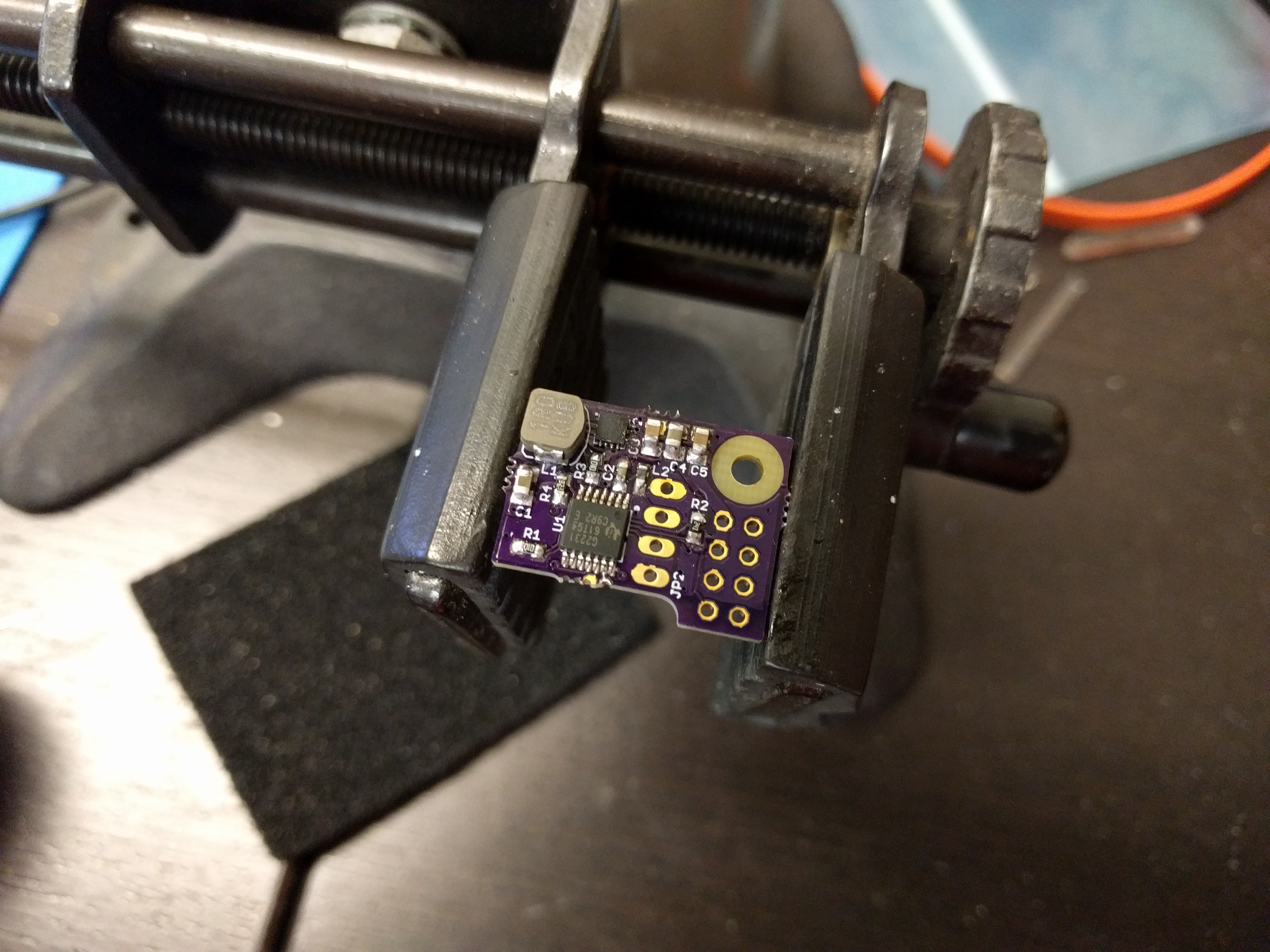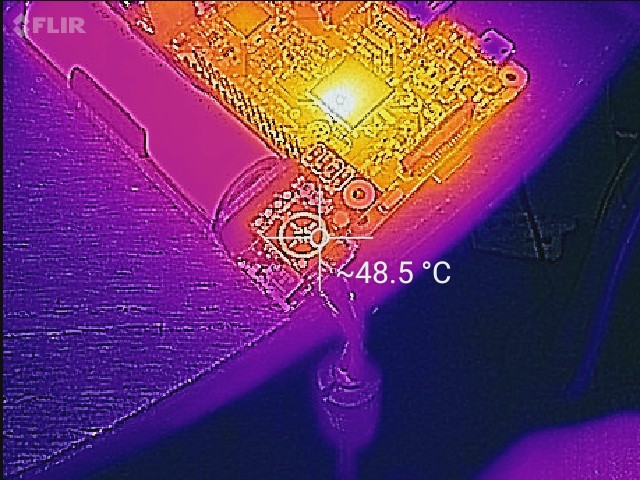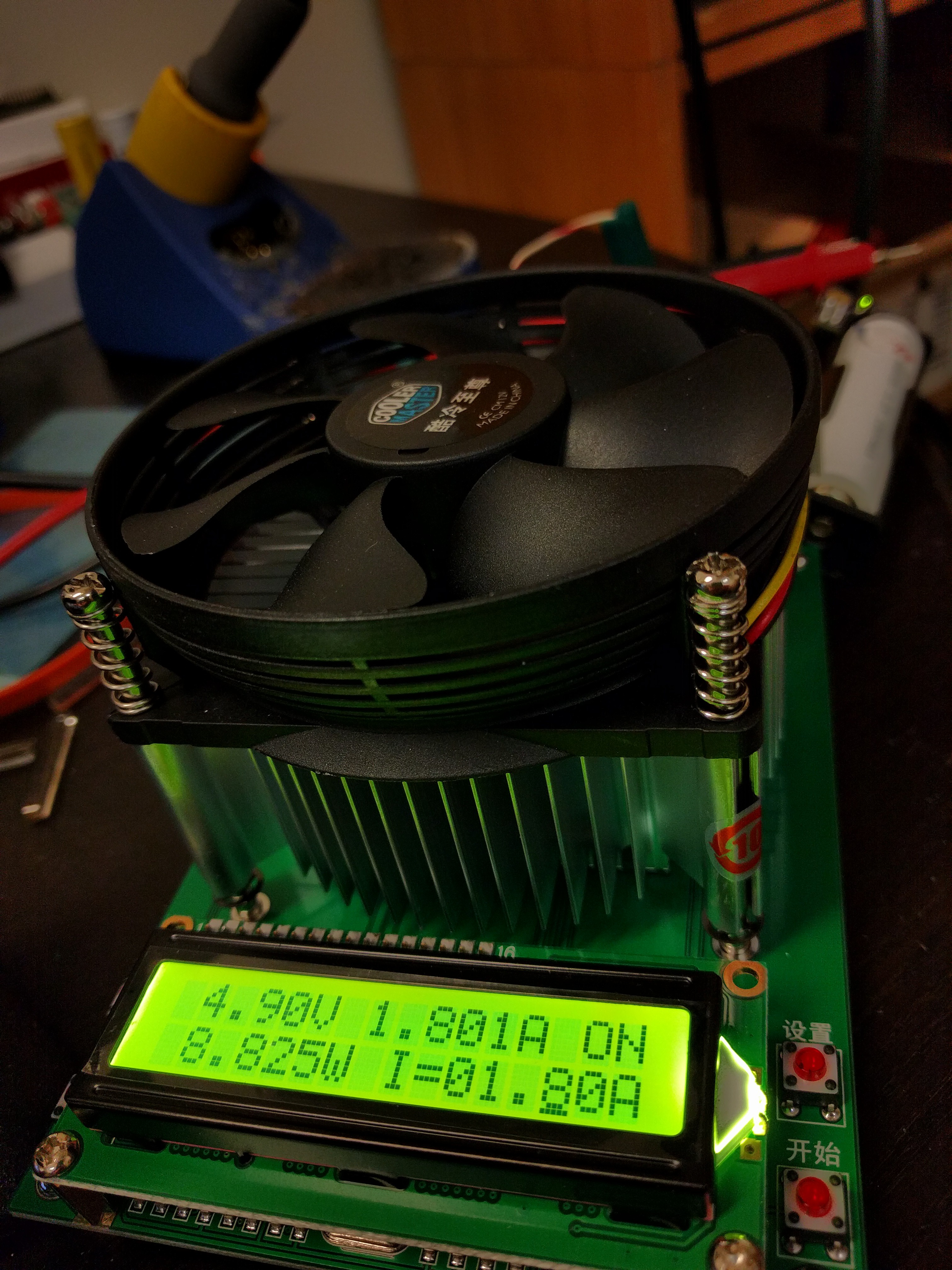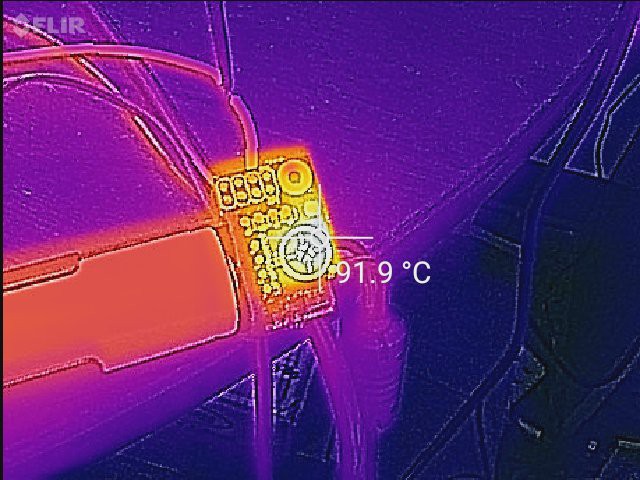Prototype PCBs for the higher power LiFePO4wered/Pi+ arrived from OSH Park, so I built up a prototype:

I also hacked a #LiFePO4wered/18650 to charge at up to 3A instead of 1.3A as a base for this. This proved to be a bit of a challenge. The charger uses an asynchronous buck converter topology, and the little Schottky diode kept getting too hot and burning out. So I had to hack in a diode in a big SOD-128 package to make it work. It's still getting too hot but it's surviving so I can do the testing with this power manager. This is a basic problem with asynchronous converters: you can never get rid of the voltage drop over the Schottky diode, and at high currents, it becomes a power dissipation problem.
The thermal image below shows the charger getting "too hot" when charging at 3A:

The new TPS61235P boost converter is pretty amazing though. With the Raspberry Pi3 running with 4 cores at 100%, the CPU at > 100C, the boost converter is hardly breaking a sweat:

Very nice! So time to put it on the electronic load and see how high it can go:

And here is a thermal shot at this load current:

I have to admit that eventually, the chip did a thermal shutdown at 1.8A. I lowered the load to 1.6A and it's been running for several days now (while charging, which provides a ton of heat on its own).
Overall I'm very happy with this result. It's capable of providing twice the power of the current LiFePO4wered/Pi before going into thermal shutdown. The components were chosen to provide up to 3A, but I think I have to face the reality that in this form-factor, that is not going to happen. The PCB is just too small to provide any substantial heat sinking. If I want to get to 3A, I will have to change the design and go to a larger PCB.
The #LiFePO4wered/18650 charger may actually be more of a limiting factor to get to 3A though. It's doing it in this prototype, but not at a healthy, mass producible temperature. I may need to look into a synchronous switching solution to get rid of the inherent voltage drop of the diode, which would always result in ~1.5W of power dissipation at 3A.
In the meantime, this still provides a path to an improved LiFePO4wered/Pi3. 1.7A is a huge improvement over 0.85A. And even though 3A charge current seems to be out of reach for the #LiFePO4wered/18650, 1.8A may be a whole lot more manageable.
 Patrick Van Oosterwijck
Patrick Van Oosterwijck
Discussions
Become a Hackaday.io Member
Create an account to leave a comment. Already have an account? Log In.